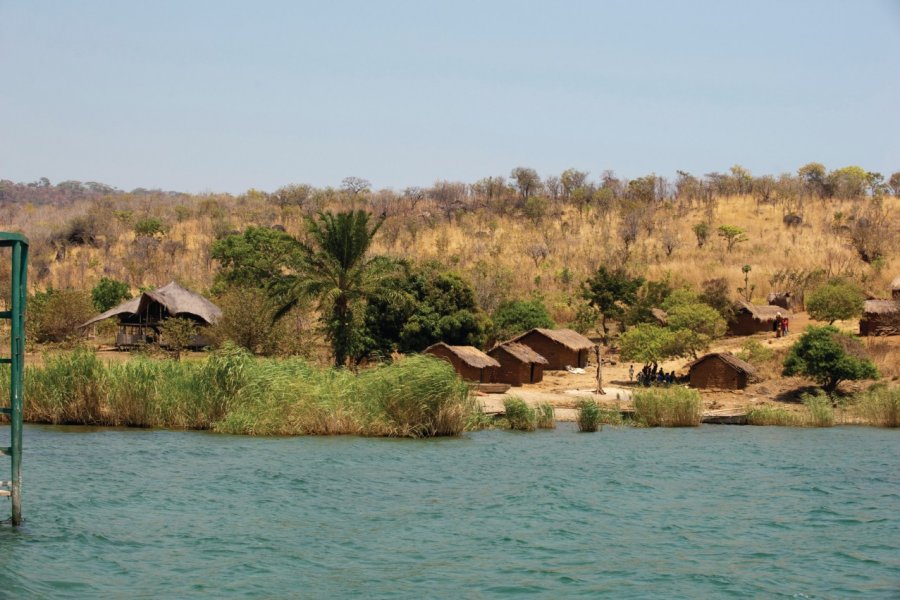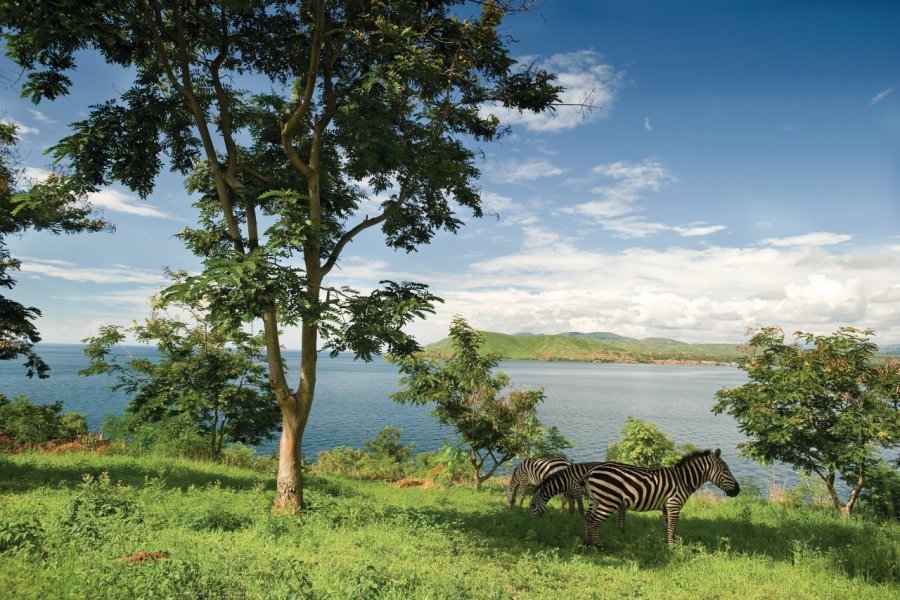Travel Guide Lake Tanganyika
Find an accommodation
Advertising
Discovered in 1858 by the British explorers Burton and Speke, this lake, with an average width of 60 km, is the longest in the world (680 km). This gives it a surface area of some 32,000 km².) It is also the second deepest (1,435 m) after Lake Baikal (1,740 m). Its bottom is 655 m below sea level and its surface 770 m above sea level.It is thought to have formed around 20 million years ago, when the continental and eastern plates of the African continent separated, and continues to widen by a few centimetres each year. More poetically, local legend has it that the lake was originally a vast, bottomless well, rich in fish, belonging to a couple who were not to reveal its secret under any circumstances. But the woman told her lover. The spirit of the well was unleashed, causing the water to overflow and form a lake that drowned all the inhabitants of the region.The lake owes much of its beauty to its enclosure (like Lake Nyasa): the surrounding mountains are over 2,600 m high. Real storms occur here from time to time. Four countries share its waters: Tanzania on the eastern shore (of which Kigoma is the main town), the Democratic Republic of Congo to the west, Burundi at the northern end, and Zambia at the southern end, which has just 7% of the lake's surface area. On the Congolese side, at Kalemie (capital of northern Katanga), the Lukuga River carries the lake's waters to the Congo River, which flows into the Atlantic (the Great Rift Mountains to the east are too great an obstacle to the Indian Ocean).Offshore fishing is abundant: tilapia, Nile perch, catfish, tigerfish, sangaras and dagaas are frequently eaten fried or dried in the sun and sent in boatloads to the rest of the country. Many fishermen live on the shores of the lake. These fishermen, who live in mud huts, work mainly at night: they use pressurized kerosene lamps to attract Dagaas sardines. They then knock on one side of the boat, and all the frightened fish rush into the net. In the morning, the entire catch is spread out on gravel to dry in the sun.Swimming. Although the surface temperature sometimes reaches 25°C, the depth of the lake keeps the water relatively cool and healthy. Winds blowing from the surrounding mountains ensure that the water does not stagnate, preventing the spread of bilharzia. Swimming in Lake Tanganyika is therefore possible just about anywhere, as long as you ask the locals about safety conditions and avoid the river mouth deltas because of the crocodiles, hippos and water cobras. Before jumping into the water, bear in mind that the sight of naked bodies could shock some of the Muslim population living on the shores of the lake.
Suggested addresses Lake Tanganyika
Weather at the moment
Advertising
Organize your trip with our partners Lake Tanganyika
Transportation
Book your plane tickets
Car Rental
Boat rental
Accommodation & stays
Find a hotel
Holiday rental
Find your campsite
Tailor-made trip
Immersion travel
Services / On site
Activities & visits
Find a doctor
Find unique Stay Offers with our Partners
Pictures and images Lake Tanganyika
Other destinations nearby Lake Tanganyika
5 km away
100 km away





